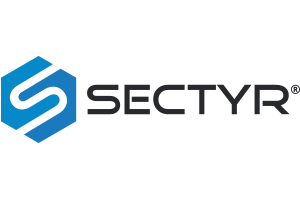SPONSORED CONTENT
For 340B program directors, complying with the U.S. Health Resources & Services Administration’s (HRSA’s) requirements is top of mind, all the time. That’s partly because maintaining their employer’s 340B program directly ties to profitability and sometimes survival. Covered entities need 340B revenue to meet the program’s purpose “to stretch scare resources as far possible, reach more eligible patients and provide more comprehensive services.” Complying with the program requires a constant focus on guidelines and regulations.
Along with protecting program benefits and monitoring changing requirements, 340B program managers also hear politicians, pharmaceutical manufacturers and the press call for more oversight by the federal government. Manufacturers are concerned about program growth. According to HRSA, discounted purchases under the 340B Program hit $44 billion in 2021, a 16-percent uptick from 2020. The volume may have slowed down with the recent manufacturer restrictions on use of 340B discounts in the contract pharmacy setting but they have not slowed Congressional interest in the program.
While many healthcare executives know how 340B drug discounts impact their organization’s profitability, they’re typically unaware of what happens behind the scenes to stay eligible. They may not fully understand the risk to their healthcare system’s net income if drug discounts are inadvertently used for ineligible patients and manufacturer paybacks were necessary. Compounding the challenge are 340B managers and staff who lack resources to comprehensively stay prepared for a HRSA audit.
What’s needed to help 340B program directors and CFOs?
Covered entities and their executives need real-time information about their program’s compliance with HRSA requirements instead of waiting to react to issues. With so much at stake for healthcare systems and patients, giving 340B program managers situational awareness about their relationship with contract pharmacies is critical. Having a tighter rein on contract deficiencies and claims audits would also help 340B managers avoid duplicate discounts. Ensuring documentation compliance and centralizing compliance data would give managers and CFOs clarity about their program’s status and the confidence to know they could pass an audit tomorrow.
Five pillars for continuous program compliance
Being able to see—in real time if a 340B program is compliant requires achieving the five value pillars of continuous program compliance: standardization, accountability, visibility, efficiency, and sustainability.
One way to support these pillars is by using tools, like SectyrHub® 340B, that helps protect your program from risk by making it easy to continually comply with requirements and be ready at any time for a HRSA or manufacturer’s audit. Users are able to see with one click if their program compliance is red, yellow, or green in regard to each area of 340B compliance. The technology can guide users through their compliance workflows, including validation of required documents, efficient and focused auditing of claims transactions, and confirming the accuracy of OPAIS data.
Achieving the five value pillars without technology might be feasible for a smaller 340B program that can also enlist several people to shoulder to-dos, reminders, data entry, and other administrative tasks. But as a program’s complexity and size grows, deploying some form of compliance software is critical. Here’s why:
Standardization
In the absence of organization-wide standards, each covered entity may manage compliance tasks a bit differently. When each of the covered entity’s TPAs employ their own audit procedures, rolling up audit data in one place and applying the same rules consistently across the entire data set can be a challenge if not impossible. Compliance management software with logic-based workflows helps program directors employ standard procedures for all covered entities in the system. Covered entities can also get a consolidated view of TPA transaction data. Compliance software can reduce variability and improve predictability by standardizing processes and reporting.
Accountability
With multiple stakeholders, 340B directors often struggle to tap who owns tasks and outcomes. Manual processes cause program managers to waste time analyzing data only to find what they have collected is incorrect or out of date. By automating the management of documents with compliance software, a director can assign tasks to each responsible party and verify the owner completes the job. Accountability is further improved when each team member can see their tasks, what’s expected, and when it’s due.
Visibility
A 340B director can only manage what they can see. Too often, managing 340B compliance is a laborious practice that rarely gives directors the high-level visibility to spot trouble quickly. When stakeholders ask if the covered entity’s program is compliant, directors often make an educated guess. Compliance software gives program directors around-the-clock visibility into each covered entity’s level of compliance. That, in turn, facilitates the insight to work with confidence.
Efficiency
When a covered entity employs spreadsheets and calendars to input, track, and monitor 340B compliance requirements, time becomes a casualty. Program directors are challenged to find enough time to record, assign, and follow up on their program’s work. Much of the work is repetitive and tedious. Creating a digital dashboard for all stakeholders to view means no more guessing about what 340B team members need to do to maintain compliance. Digitizing the compliance process automatically assigns tasks and notifies team members about their program’s status.
Sustainability
It’s not uncommon to hear 340B program directors say they are dependent on a few key people. If a member of the team takes a vacation, things can stand still. And if a team member retires or leaves the organization, the program may lose invaluable institutional knowledge. Without that know-how, newer members of the team can find themselves reinventing a process each time they prepare for an audit. By automating 340B compliance processes and centralizing the management of dashboards, documents, audits, and compliance performance, everyone across the organization gains working knowledge of how to comply with HRSA requirements.
Supporting the five value pillars of continuous program compliance with SectyrHub® 340B provides the peace of mind to know the program could pass a HRSA audit right now. SectyrHub® 340B identifies issues requiring attention in real-time and serves as a collaboration hub for 340B teams and their auditors before, during and after an audit. And that, in turn, means the organization can spend more time and resources caring for your communities.

Craig Frost is President and COO of Sectyr. He can be reached at Craig.Frost@Sectyr.com.




